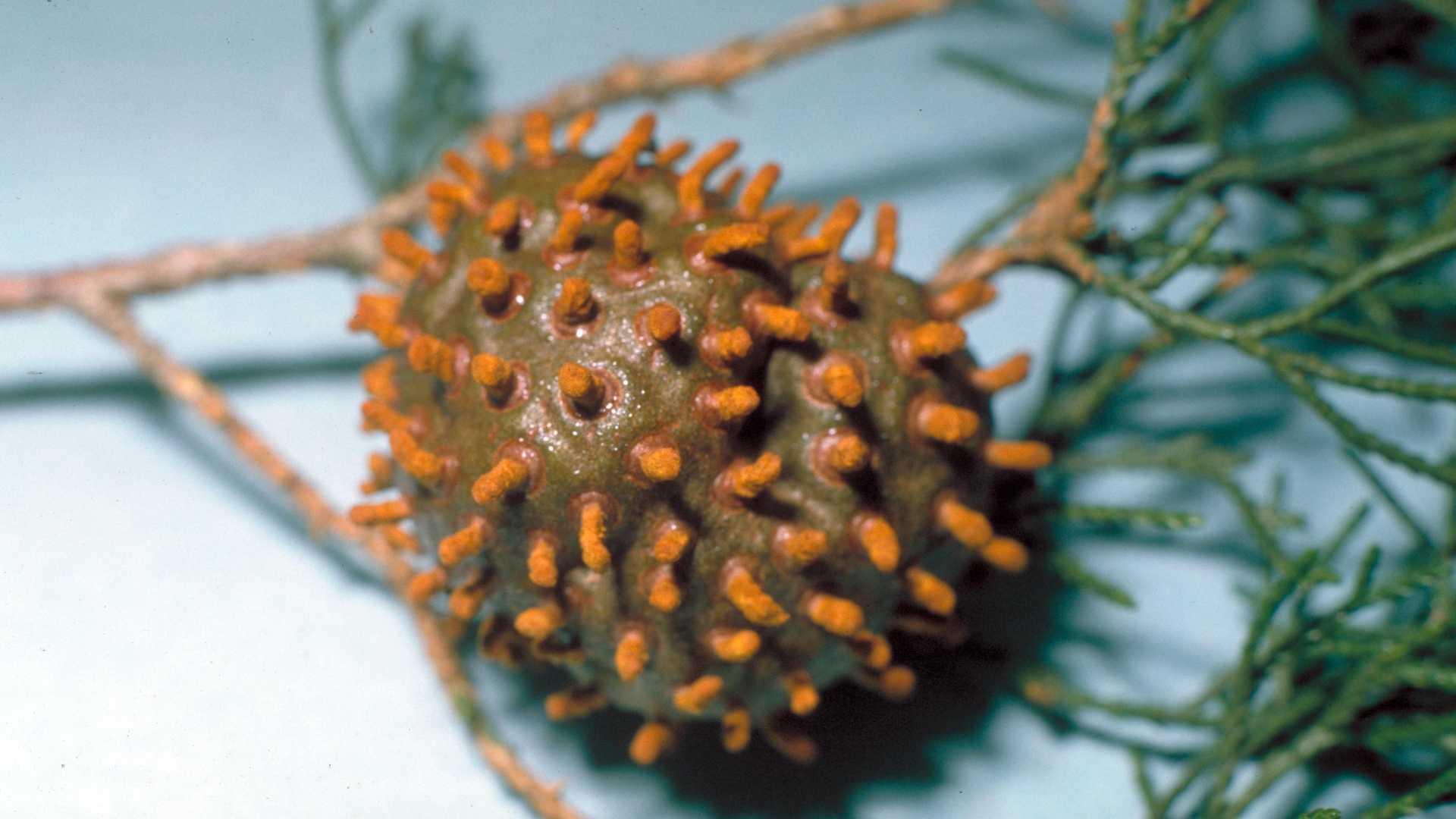Key points
- Cedar-apple rust, quince rust, and hawthorn rust are diseases that require plants from two different families in order to complete their life cycle. Plants from the Cupressaceae family (red cedar, juniper) and from the Rosaceae family (crabapple, pears, apples, hawthorn, serviceberry/shadbush, and quince). Juniperus virginiana, the Eastern red cedar, is the most common rust-susceptible cedar in Maryland.
- The diseases are caused by fungi in the genus Gymnosporangium.
- These rusts damage many popular ornamental plants. Colorful leaf spots and twig and fruit malformations are produced on pomaceous plants. Peculiar round leaf galls, twig galls, cankers, and twig dieback are produced on cedar hosts.
Conspicuous symptoms are produced on both apples and cedars. Fungal spores produced on one type of host plant are carried by wind to infect the other.





